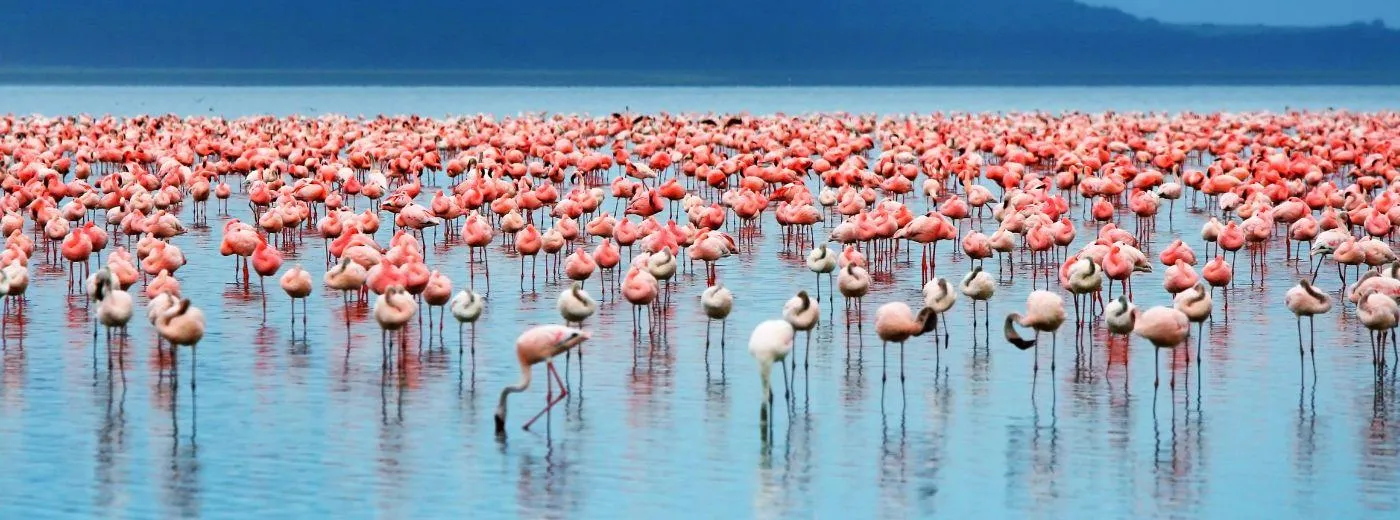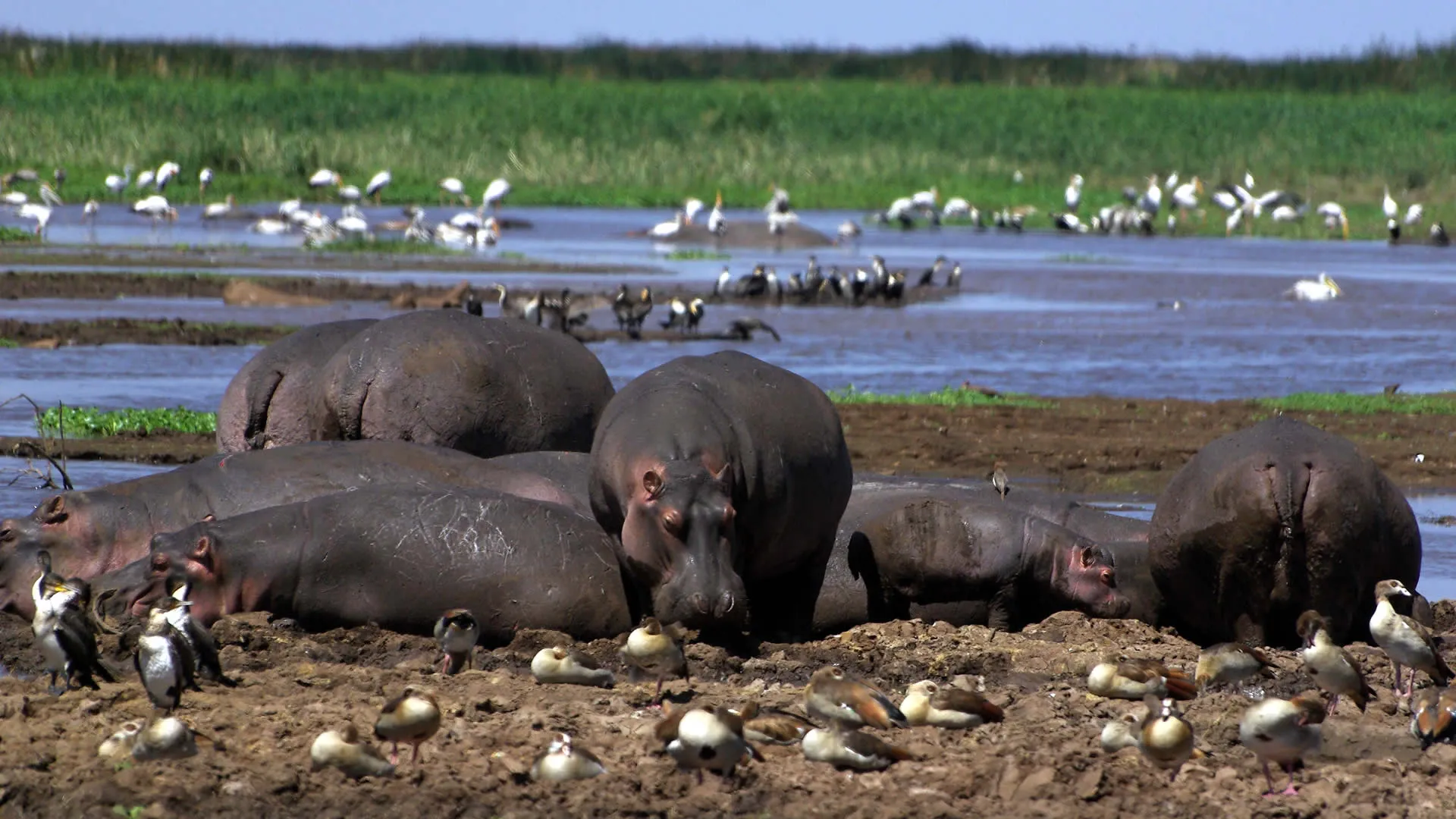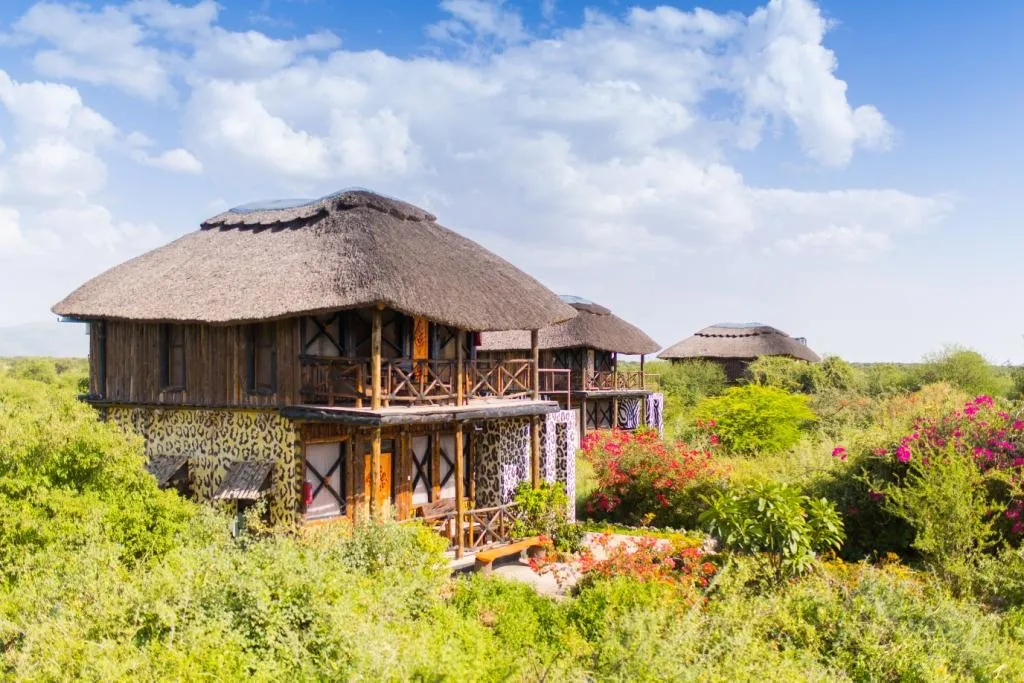Explore the Diverse Wildlife at Lake Manyara National Park, Tanzania

In the heart of Tanzania’s northern circuit lies Lake Manyara National Park, a hidden gem offering a mosaic of breathtaking landscapes and unparalleled wildlife experiences. As you journey through this remarkable sanctuary, you’ll discover a place where the land tells a story—of ancient geological forces, vibrant ecosystems, and the intricate dance of life that plays out across its diverse terrains.
This article delves into the wonders of Lake Manyara National Park, exploring its rich wildlife, unique habitats, and the extraordinary experiences that await visitors. You’ll also learn about the best times to visit, the various activities available and how to combine your trip with other iconic Tanzanian destinations for a truly unforgettable adventure.
Whether you’re a seasoned safari-goer or planning your first trip to Africa, this guide will provide you with all the information you need to make the most of your visit to Lake Manyara National Park.
Book Your Unforgettable Tanzanian Safari with AJ Kenya Safaris
For an extraordinary safari experience in Tanzania, choose AJ Kenya Safaris. With AJ Kenya Safaris, every detail is meticulously planned to ensure an unforgettable journey. Our expert guides will lead you through iconic parks, from the lush shores of Lake Manyara to the vast wilderness of the Serengeti, offering insider knowledge and personalized insights.
Call or WhatsApp us at +254-704-532-105 and let us turn your dream safari into a reality.
Executive Summary
In this article you’ll;
- Learn about Lake Manyara’s diverse wildlife, including its famous tree-climbing lions and vibrant bird species.
- Discover the best ways to explore the park, from thrilling game drives to cultural encounters with the Maasai people.
- Get insights into the ideal times to visit the park, considering weather, wildlife viewing, and seasonal highlights.
- Find recommendations for combining your visit to Lake Manyara with other iconic Tanzanian destinations for a complete safari experience.
Discovering Lake Manyara National Park

Nestled in the northern part of Tanzania, Lake Manyara National Park is conveniently located just 126 kilometers west of Arusha Town, making it an ideal destination for a day trip or the perfect starting point for a longer safari adventure. The lake is also easily accessible from Lake Manyara Airport meaning that travelers can seamlessly begin their exploration of the park shortly after arrival.
So, what exactly are the top attractions of Lake Manyara National Park?
The first is its striking landscape which features dense woodlands, marshlands, hot springs, steep rocky slopes, equatorial forests, mountain slopes, and lush acacia woodlands. There’s also its vast wildlife varieties which include elephants, lions, baboons, giraffes, zebras, wildebeests, hippos, and buffaloes. Also vast is its bird population which includes species like flamingos, pelicans, storks, cormorants, and 400 other species. And last but not least, we have its wide-ranging accommodation which includes everything from luxury lodges to mid-budget and budget lodges.
P.S. A minimum stay of two nights is suggested for a comprehensive experience of Lake Manyara National Park.
Lake Manyara’s Status as a Rift Valley Soda Lake

Lake Manyara’s status as a soda ash lake in Tanzania’s Rift Valley makes it a truly unique destination for birdwatching enthusiasts. A soda lake is a lake with a high pH value, usually between 9 and 11, due to the presence of alkaline salts, primarily sodium carbonate. These alkaline conditions create an ideal environment for the growth of algae and other microorganisms, attracting a variety of bird species. From the elegant greater and lesser pink flamingos to the striking pink-backed pelicans and the regal yellow-billed storks, Lake Manyara is an incredible habitat for hundreds of bird species.
Lake Manyara’s Ecological Diversity
Lake Manyara’s ecological diversity stems largely from its location within the Great Rift Valley, which houses a broad spectrum of habitats and ecosystems. The steep cliffs and escarpments of the Rift Valley create a stunning landscape that supports a multitude of plant and animal species. Wildlife even uses the Rift Valley as a migration corridor, facilitating the movement of animals between different protected areas. This incredible convergence of factors makes Lake Manyara an essential destination for maintaining the ecological balance and biodiversity of the area.
Lake Manyara’s Fascinating Acacia Woodland and Forest
Lake Manyara National Park’s acacia woodlands and forests provide sanctuary to a multitude of wildlife. Among the trees found in the park are the umbrella tree, the whistling thorn, and the fascinating wait-a-bit. These woodlands and forests provide a wealth of habitat and food sources for wildlife, creating vital nesting sites for birds, monkeys, and other animals, as well as an abundance of seeds, fruits, and leaves for herbivores such as elephants, giraffes, and antelopes.
The park’s lions, for example, exemplify the intriguing adaptations witnessed in this distinctive environment. These lions:
- Use the acacia woodlands and forests as a vantage point for hunting and observing their prey
- Use the dense foliage as perfect camouflage
Elephants, too, have made incredible adaptations to thrive in these woodlands and forests, selecting specific tree species for foraging and demonstrating their impressive adaptability.
Unique Wildlife Encounters at Lake Manyara National Park

Lake Manyara National Park offers visitors a chance to experience unique wildlife encounters, most notably its famous tree-climbing lions. These rare lions are a captivating sight, lounging in acacia trees—a behavior observed in only a few places worldwide. The park is also home to large herds of elephants, vibrant flocks of flamingos, and a variety of primates. As you explore the diverse landscapes, from dense forests to open savannahs, you’ll discover an array of wildlife that makes Lake Manyara a must-visit destination for nature enthusiasts and photographers alike.
Tree Climbing Lions

The tree-climbing lions of Lake Manyara National Park are a truly astonishing sight to behold. These lions possess a unique ability to climb trees, which is quite uncommon compared to their counterparts in other parks. The remarkable tree-climbing habits of these lions are believed to be a result of their adaptation to their environment, with factors such as the presence of suitable trees for climbing and the need to escape the heat, avoid insects, or gain a better vantage point for hunting contributing to this behavior.
Morning, night, and afternoon game drives are offered to visitors of Lake Manyara National Park for a complete appreciation of these tree-climbing lions. These exhilarating excursions provide a unique opportunity to witness these lions in their natural habitat, resting in the trees during the day and descending to hunt at night.
Birdwatching Paradise

Birdwatchers can delight in the fact that Lake Manyara National Park serves as an avian paradise! With over 400 bird species residing in the park, there’s no shortage of fascinating avian encounters to be had. From the elegant flamingos that grace the western shores of of the lake to the regal yellow-billed storks and pink-backed pelicans, each species offers a unique and captivating glimpse into the world of these feathered wonders.
The ideal time for birdwatching at Lake Manyara National Park is from November to April, coinciding with the short rains. During these months, the park’s landscapes become lush and vibrant, providing an idyllic setting for birdwatching. Visitors can witness the arrival of migratory birds, adding to the already diverse birdlife of the park. The short rains not only enhance the park’s beauty but also create the perfect conditions for an unforgettable birdwatching adventure, with flamingos, pelicans, and countless other species gracing the skies and shores of Lake Manyara.
Best Time to Visit Manyara Lake National Park
The ideal time to visit Lake Manyara National Park hinges on your personal preferences and the experiences you wish to have during your stay. The dry season, from July to November, offers better wildlife viewing opportunities, with animals congregating around water sources.
Alternatively, the wet season, from November to June, presents lush landscapes and the chance to see migratory birds.
Dry Season Advantages
There are numerous benefits to visiting Lake Manyara National Park during the dry season (July to November). The dry conditions draw animals to the few remaining water sources, making it easier to spot:
The short grass in the park’s savanna during the dry season also allows for improved visibility and better wildlife and game viewing opportunities.
In addition to the excellent wildlife viewing, the dry season also brings pleasant temperatures for visitors to enjoy. Afternoon temperatures typically hover around 24°C/75°F, while evening temperatures remain comfortable at around 14°C/57°F. A light jacket is recommended for early game drives, ensuring you’re comfortable as you explore the park’s incredible sights.
Wet Season Experiences
From November to June, the wet season at Lake Manyara National Park offers a unique range of experiences. This period includes both the short rains and the long rains, with the latter often being the wettest month. During this time, the park transforms into a vibrant green landscape, with lush vegetation providing cover for wildlife and creating a stunning backdrop for your adventures. Rainfall averages around 54 inches over 21 days, and temperatures range from 11°C in the morning to 17°C in the afternoon. Despite the muddy roads and trails, the dense vegetation enhances wildlife observation, offering a special opportunity to witness unique animal behaviors during the low season.
Adventures and Activities at Lake Manyara
A multitude of adventures and activities are available at Lake Manyara National Park to ensure a memorable visit. From thrilling game drives to immersive cultural experiences, you’ll find no shortage of ways to explore and connect with the park’s incredible landscapes and wildlife.
Game Drives

Game drives at Lake Manyara National Park offer an incomparable chance to observe the park’s rich wildlife at close quarters. As you traverse the park’s stunning landscapes, you can expect to see an exciting range of large mammals, including:
- elephants
- giraffes
- zebras
- wildebeests
- buffalos
Lake Manyara National Park’s night safaris offer an exhilarating and unique opportunity to observe the park’s nocturnal wildlife in their natural habitat. Thse include; hyenas, bats, cheetahs, leopards, and aardvarks.
Cultural Experiences
Immerse yourself in the rich local culture by visiting Maasai villages and participating in village tours. These engaging cultural experiences offer a unique insight into the daily lives of the Maasai people, showcasing their vibrant heritage and close connection to nature. You can take a tour of a Maasai boma or visit Mto wa Mbu, a small town adjacent to the park, where you can enjoy local banana beer, visit a brewery or a farm, and savor a traditional Tanzanian meal.
By partaking in these cultural experiences, you’ll not only expand your understanding of the Maasai people and their way of life but also form lasting memories of your time spent at Lake Manyara National Park.
Accommodation Options at Lake Manyara National Park
A variety of lake manyara accommodation options are available at Lake Manyara National Park to cater to the needs and preferences of all travelers. From luxurious lodges with spa facilities and night safaris to eco-friendly camps and tented suites, you’re sure to find the perfect place to rest and recharge after an exciting day exploring the park.
Luxury Lodges

For those seeking a more lavish stay, luxury lodges in Lake Manyara National Park offer a range of amenities and services to make your experience even more enjoyable. Some of the amenities you can expect at these luxurious accommodations include:
- Spacious and well-appointed rooms
- Private balconies or terraces with beautiful views
- On-site restaurants, bars, or lounges
- Swimming pools or spa facilities
- Guided safari tours with knowledgeable guides
- Wi-Fi or internet access
- Laundry services
- 24-hour front desk and concierge services
Some of the fantastic luxury lodges available around Lake Manyara National Park include:
- Lake Manyara Serena Lodge
- Lake Manyara Tree Lodge
- Manyara Ranch Conservancy
- Lake Manyara Kilimamoja Lodge
- Escarpment Luxury Lodge
Prices for these lodges can vary greatly, so it’s recommended to check specific lodge websites or travel booking platforms for the most up-to-date prices and the best deals.
Eco-friendly Camps and Tented Suites

For a more sustainable and immersive stay in the park, consider eco-friendly camps and tented suites. These accommodations are designed to maximize environmental protection while still providing a comfortable experience for guests. Manyara Wildlife Safari Camp and Manyara Green Camp are some of the highly-rated eco-friendly camps in Lake Manyara National Park.
Staying in eco-friendly accommodations not only allows you to enjoy a more authentic and intimate connection with the park’s incredible landscapes and wildlife but also supports responsible travel practices that help preserve the natural beauty of Lake Manyara National Park for future generations to enjoy.
Combining Lake Manyara with Other Tanzanian Destinations
Optimize your East African safari adventure by pairing your visit Lake Manyara with other Tanzanian destinations like the Northern Safari Circuit or East Africa Safari extensions. This allows you to explore even more of the diverse landscapes and ecosystems that Tanzania has to offer, creating a truly diverse and unforgettable journey.
Northern Safari Circuit

Tanzania’s Northern Safari Circuit, also known as the northern gate, is home to an incredible array of national parks, including Serengeti National Park, Tarangire National Park, and the Ngorongoro Conservation Area, home to the Ngorongoro Crater. The stunning Serengeti is home to the iconic Great Migration, where millions of wildebeests, zebras, and other animals move across the plains in search of fresh grazing lands. Combining Lake Manyara with these other Tanzanian destinations allows you to witness the full spectrum of Tanzania’s breathtaking wildlife and landscapes.
Not only will you have the chance to observe the unique tree-climbing lions of Lake Manyara, but you’ll also be able to explore the vast plains of the Serengeti and witness the awe-inspiring spectacle of the Great Migration. This comprehensive wildlife experience is sure to leave you with a lifetime of unforgettable memories.
East Africa Safari Extensions

Extend your East Africa safari adventure even further by combining your visit to Lake Manyara with destinations in Kenya, such as Maasai Mara, for a diverse and unforgettable journey. Maasai Mara is home to an incredible array of wildlife, including the lion, elephant, buffalo, zebra, and cheetah, offering a unique opportunity to witness these majestic creatures in their natural habitat.
By exploring the East Africa Safari extensions, you’ll be able to delve even deeper into the stunning landscapes and diverse wildlife that this incredible region has to offer. From the rolling plains of the Masai Mara to the lush wetlands of Lake Manyara, your adventure through East Africa will be a truly remarkable and unforgettable experience.
Summary
From the enchanting landscapes of the Rift Valley to the unique tree-climbing lions and vibrant birdlife, Lake Manyara National Park offers an unforgettable adventure for wildlife enthusiasts and nature lovers alike. Whether you choose to explore the park on a game drives or night safari, immerse yourself in the rich Maasai culture, or combine your visit with other Tanzanian destinations, a journey to Lake Manyara National Park promises to be a truly memorable experience that will leave you amazed by the beauty and diversity of East Africa’s wildlife.
